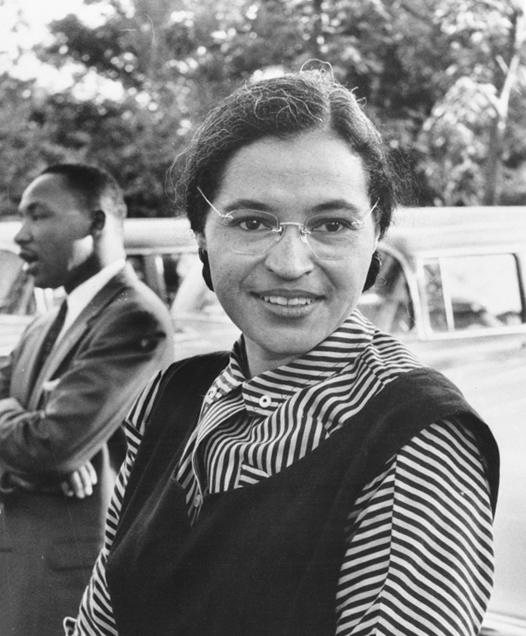What is the legacy of this extraordinary woman? Do you have the facts at your fingertips to share with your children when we celebrate her achievements on December 1? Former primary school teacher Catherine Lynch of education experts PlanBee is here to help

In the US, Rosa Parks Day is a public holiday which honours the work of this inspirational woman who is known as ‘the first lady of civil rights’ and ‘the mother of the freedom movement’ by the United States Congress. Her influence spread far beyond the US and in the UK, too, we commemorate her work on this date.
The Montgomery bus boycott, which followed Rosa Parks’ protest, was the inspiration for the UK’s Bristol bus boycott in 1963, which arose from the refusal of the Bristol Omnibus Company to employ Black or Asian bus crews. This was the UK’s own version of the civil rights movement that shook the American South. This year, in the wake of the Black Lives Matter protests, Rosa Parks Day is bound to take on a special significance all over the world.
Who was Rosa Parks?
She was born on 4 February, 1913, in Alabama, US. Her mother was a teacher and her father a carpenter. When her parents separated, Rosa and her younger brother moved with her mother to her maternal grandparents’ farm near Montgomery in Alabama.
What was America like at that time?
African Americans did not have the same rights as white Americans and there was widespread racial segregation. In the 1960s, the civil rights movement called for widespread reform. Supporters wanted children with different racial backgrounds to go to the same schools and for everyone to have the same rights – for example, equal access to transport – and interracial marriages. African Americans and others who supported the cause took part in non-violent protests, resistance and civil disobedience.
Why is Rosa Parks famous?
Montgomery, the capital city of the state of Alabama, had a law saying bus passengers had to be separated by race. Conductors were allowed to make African Americans give up their seats for white passengers while white passengers didn’t have to share a row of seats with non-white passengers. The law also said that non-white passengers had to board the bus at the front to pay, then get off the bus, and get on again at the back. Sometimes passengers who had paid would not be able to board the bus again before it departed.
How did she make her protest?
On 1 December, 1955, when Rosa was 42 years old, she boarded a bus to go home after work. Rosa sat in a seat in the first row of seats allowed for non-white passengers. After a while the seats allocated for white passengers filled up and the driver told the four people in Rosa’s row of seats to stand up so a white passenger could sit down. The other three passengers stood up, but Rosa didn’t. She moved towards the window making room for the other passenger.
Describing the incident, she said: ‘When he [the bus driver] saw me still sitting, he asked if I was going to stand up and I said, “No, I’m not”. And he said, “Well, if you don’t stand up, I’m going to have to call the police and have you arrested”. I said, “You may do that”.’
Rosa was arrested, charged, and found guilty of violating the segregation law and disorderly conduct. She appealed against her conviction and challenged the legality of racial segregation.
What is the Montgomery Bus Boycott?
On Sunday, 4 December, 1955, a bus boycott was announced in response to Rosa’s conviction. It lasted 381 days, severely damaging the bus companies’ finances. Eventually, the courts ruled that the Montgomery buses would become integrated. This meant that everyone using the busses had the same rights.
What was the impact of Rosa Parks’ arrest?
Rosa Parks lost her job in the department store where she worked and had to find a new job as a seamstress. Her husband also had to leave his job as his employer forbade him from talking about his wife or her legal case. They also had to move from Montgomery to Hampton, Virginia.
Was her conviction reversed?
Rosa Parks’ case moved slowly through the appeals court. In 1956, the Supreme Court ruled that bus segregation was unconstitutional.
What did Rosa do after the boycott?
Rosa became a spokesperson for the civil rights movement and later wrote a book about her experiences. She died in 2005 at the age of 92.
Five facts about Rosa Parks
- Detroit has named a street Rosa Parks Boulevard in her honour.
- Claudette Colvin was the first Montgomery bus passenger to be arrested for refusing to give up her seat for a white passenger. She was arrested nine months before Rosa Parks. Rosa helped to raise money for Claudette’s defence in court.
- A few weeks after her first arrest, Rosa was arrested again alongside many other boycott organisers.
- After her death, she was the first woman to lie in state in the US Capitol. This honour is usually reserved for a statesperson or military leader. More than 30,000 people filed past her coffin to pay their respects.
- On 1 December 2005, bus seats were left empty in New York City, Washington DC and other American cities, to honour Rosa Parks on the 50th anniversary of her arrest.
PlanBee has fabulous FREE Rosa Parks educational resources for download: Rosa Parks word searches and inspirational Rosa Parks quotes posters.

